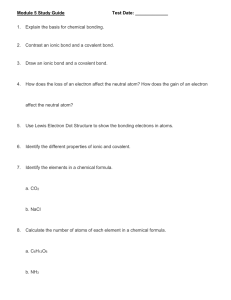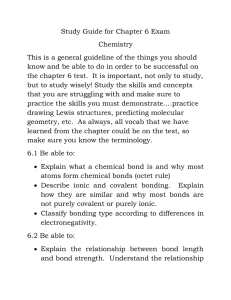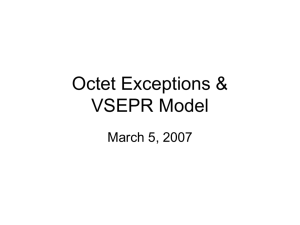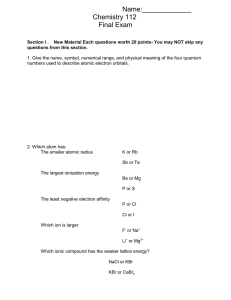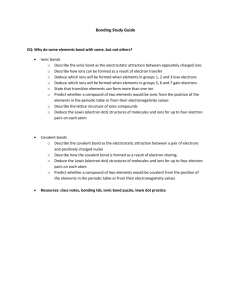Honors Chemistry IB Midterm Review
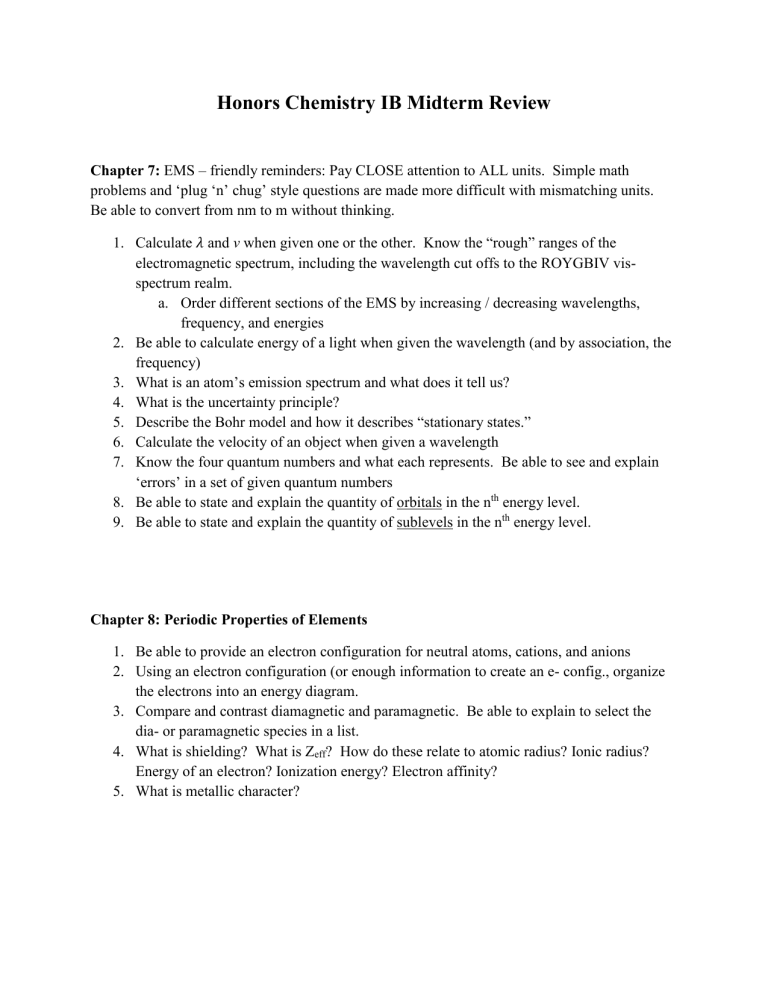
Honors Chemistry IB Midterm Review
Chapter 7: EMS – friendly reminders: Pay CLOSE attention to ALL units. Simple math problems and ‘plug ‘n’ chug’ style questions are made more difficult with mismatching units.
Be able to convert from nm to m without thinking.
1.
Calculate 𝜆 and v when given one or the other. Know the “rough” ranges of the electromagnetic spectrum, including the wavelength cut offs to the ROYGBIV visspectrum realm. a.
Order different sections of the EMS by increasing / decreasing wavelengths, frequency, and energies
2.
Be able to calculate energy of a light when given the wavelength (and by association, the frequency)
3.
What is an atom’s emission spectrum and what does it tell us?
4.
What is the uncertainty principle?
5.
Describe the Bohr model and how it describes “stationary states.”
6.
Calculate the velocity of an object when given a wavelength
7.
Know the four quantum numbers and what each represents. Be able to see and explain
‘errors’ in a set of given quantum numbers
8.
Be able to state and explain the quantity of orbitals in the n th
energy level.
9.
Be able to state and explain the quantity of sublevels in the n th
energy level.
Chapter 8: Periodic Properties of Elements
1.
Be able to provide an electron configuration for neutral atoms, cations, and anions
2.
Using an electron configuration (or enough information to create an e- config., organize the electrons into an energy diagram.
3.
Compare and contrast diamagnetic and paramagnetic. Be able to explain to select the dia- or paramagnetic species in a list.
4.
What is shielding? What is Z eff
? How do these relate to atomic radius? Ionic radius?
Energy of an electron? Ionization energy? Electron affinity?
5.
What is metallic character?
Chapter 9: Bonding I – Lewis Dots
1.
Place compounds in order of increasing / decrease lattice energies. What two components influence lattice energy? How do you use these pieces of information to determine the relative energy of a compound?
2.
Lewis Dot structures – neutral elements, cations, and anions. What is the octet rule?
Using electron configurations, how do you ‘satisfy’ the octet rule?
3.
What is electronegativity and how does it increase / decrease as you move around the table? What does this trend tell us?
4.
What does it mean to be polar? Nonpolat? How can you use differences in electronegativity to determine whether or not a molecules is nonpolar (true) covalent, polar covalent, or ionic?
5.
What is the difference between nonpolar (true) covalent, polar covalent, or ionic.
6.
What are the three exceptions to the octet rule? What does this mean / tell us? When does or can an expanded octet occur?
7.
How does bond length and bond strength relate? What are some good indicators of increasing bond strengths?
8.
Typically, what is stronger: an ionic bond or a covalent bond? Why? How? Compare and contrast lattice energy and bond strength / energy.
9.
Use bond energies to calculate the ΔH rxn
of a given reaction.
10.
What are resonance structures? How do you draw / denote them? What do they mean?
Do they occur in equal concentrations? How do you determine what is going to be favored? What is this “calculation” called and what does it mean?
Chapter 10: Molecular and Electron Geometry
1.
Compare and contrast molecular geometry from electron geometry
2.
What is the VSEPR Theory and how does this idea help to predict molecular shapes?
3.
How do lone pairs of electrons contribute to the shape of the molecule even though we cannot “see” them?
4.
What is an “electron group” and how does the molecular /electron geometry change and this number increases?
5.
Know the basic 5 shapes (up to 4 electron groups) very well. The remaining molecular / electron geometries will be in greater detail on the exam for chapter 10.
